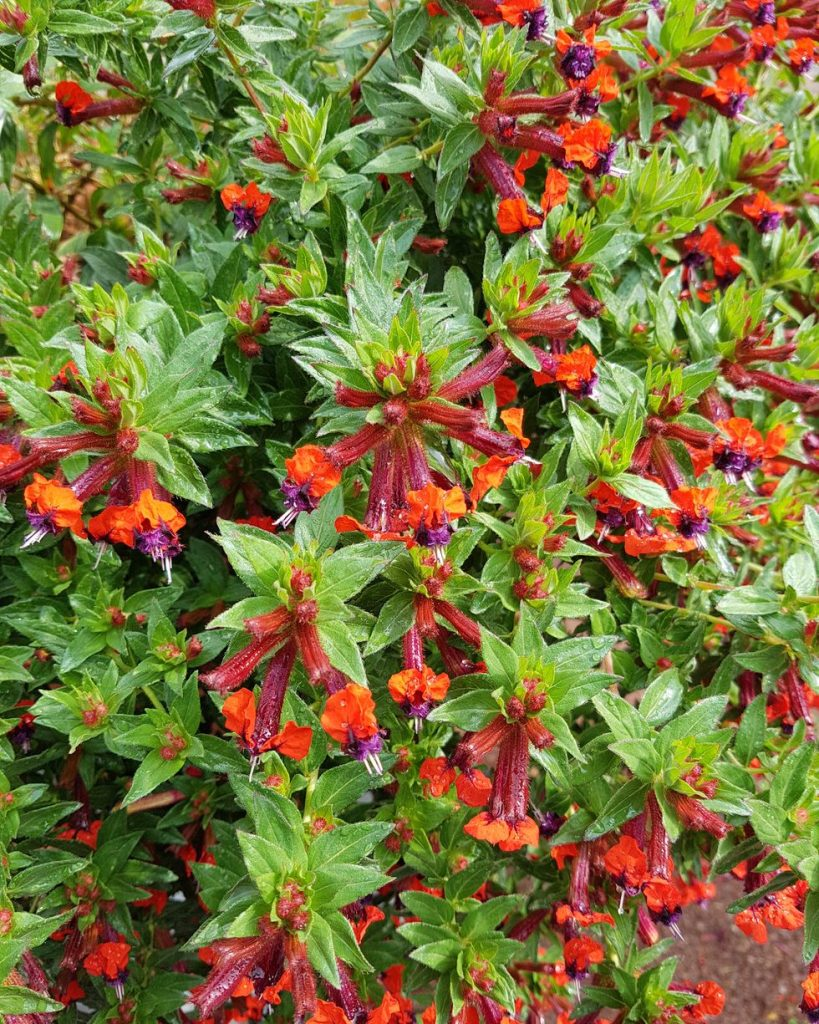Marigold

Marigolds are some of the sturdiest annuals around. They come in cheery shades of yellow, orange, apricot, and cream, and they can grow to a height of 6 to 18 inches tall. They’ve been popular for decades because they’re hardy and drought-tolerant once established.
Sun Exposure: full sun
USDA Hardiness Zones: 2 to 11
Begonia

There are many different varieties of begonias, but they all bloom profusely in shades of pink, white, and red. The winged-leaf types are especially stunning. Begonias prefer part sun to full shade, depending on the variety.
Sun Exposure: full shade to part sun
USDA Hardiness Zones: 2 to 10
Sweet Alyssum

This sweetly-scented low-growing annual comes in pink, purple, and white. It’s beautiful cascading from pots, window boxes, and hanging baskets, and pollinators love it! It will even tolerate a light frost or two.
Sun Exposure: part sun to full sun
USDA Hardiness Zones: 5 to 9
Angelonia

Often called summer snapdragon, angelonia comes in upright or cascading forms in white, pink, yellow, peach, purple, and bicolor varieties. Its tiny flowers do resemble snapdragon flowers, but it withstands the heat better.
Sun Exposure: full sun
USDA Hardiness Zones: 9 to 11
Sunflower

One of the easiest flowers to grow from seed, sunflowers can reach anywhere between a foot to over 10 feet tall! Pollinators adore their late season blooms, and they come in many shades besides sunny yellow, including pink, burgundy, and chocolate.
Sun Exposure: full sun
USDA Hardiness Zones: 2 to 11
Ammi

Ammi is a lesser-known annual that resembles the roadside wildflower, Queen Anne’s lace. Its frilly flowers appear on long stems, and they make beautiful cut flowers. It’s easy to grow from seed.
Sun Exposure: part sun to full sun
USDA Hardiness Zones: 2 to 11
Pansies and Violas

The happy, little faces of pansies and violas prefer cooler weather, so they do best in spring and fall. Give them full sun, though they’ll hang on in the heat of summer if they have some afternoon shade.
Sun Exposure: part sun to full sun
USDA Hardiness Zones: 7 to 10
Petunia

Petunias are an old-fashioned favorite that come in every color imaginable from white to pink to purple, and some even have stripes! They’re a pollinator favorite. Newer types don’t have to be deadheaded, or have spent blooms removed, in order to bloom all summer long.
Sun Exposure: full sun
USDA Hardiness Zones: 9 to 11
Cuphea

Also called firecracker plant for its bright orange cigar-shaped flowers, this annual is irresistible to hummingbirds. Cuphea doesn’t mind the heat, even in midsummer. Give cuphea its own container because it has a tendency to take over.
Sun Exposure: full sun
USDA Hardiness Zones: 8 to 11
Lobelia

Lobelia has delicate white, purple or pink flowers that drape nicely from baskets and window boxes. However, it doesn’t like the heat at all. Once temperatures are consistently in the high 70s, it gets leggy. Trim it back and it may revive in fall.
Sun Exposure: full shade to part sun
USDA Hardiness Zones: 2 to 11
Calibrachoa

Calibrachoa resembles petunia but it’s a different plant altogether. The small trumpet-shaped flowers bloom and bloom, and you never have to deadhead it to keep the flowers coming. It’s available in stunning, saturated colors from hot pink to orange, and everything in between. Hummingbirds love this plant!
Sun Exposure: part sun to full sun
USDA Hardiness Zones: 9 to 11
Torenia

Torenia is another hummingbird favorite with its tubular-shaped flowers in pink, white or purple with white throats. It looks beautiful tumbling out of window boxes.
Sun Exposure: full shade to part shade
USDA Hardiness Zones: 2 to 11
Zinnia

Zinnia is easy to grow from seed and comes in many different colors from lime green to hot pink. It is a pollinator magnet and has a long blooming life, from early summer to first frost.
Sun Exposure: full sun
USDA Hardiness Zones: 2 to 11